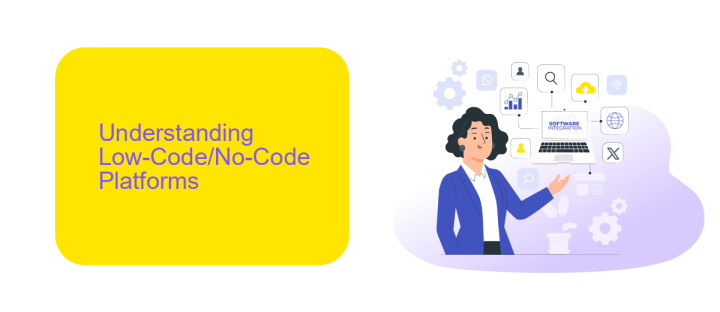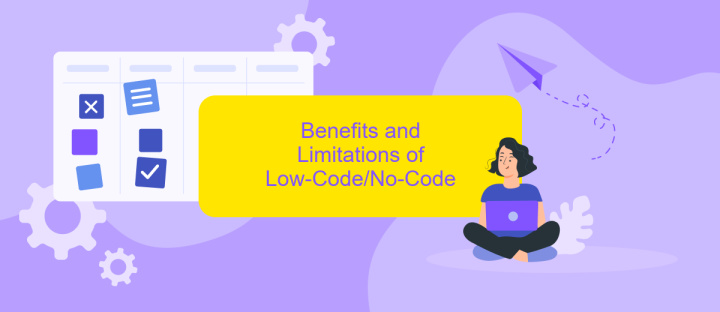Low-Code No-Code Software
Low-Code No-Code (LCNC) software is revolutionizing the way businesses develop applications by enabling users to create complex systems with minimal or no coding knowledge. This approach democratizes software development, allowing non-technical professionals to contribute to the creation of digital solutions, thereby accelerating innovation and reducing the time and cost associated with traditional development methods.
Introduction
In recent years, the demand for rapid application development has led to the rise of Low-Code and No-Code platforms. These platforms empower users to create software applications with minimal hand-coding, making technology accessible to a broader audience, including those without extensive programming skills.
- Low-Code platforms provide a visual development environment with pre-built components and templates.
- No-Code platforms go a step further, enabling users to build applications solely through drag-and-drop interfaces.
- Both platforms significantly reduce development time and costs, fostering innovation and agility.
One of the critical features of Low-Code and No-Code platforms is their ability to integrate with various services and applications seamlessly. For instance, ApiX-Drive offers a powerful integration tool that allows users to connect different systems without writing any code. This capability enhances the functionality of applications, enabling businesses to streamline their workflows and improve efficiency.
Understanding Low-Code/No-Code Platforms

Low-code and no-code platforms are revolutionizing the way software is developed by providing tools that allow users to create applications with minimal coding knowledge. These platforms offer a visual interface where users can drag and drop components to build functional software. This approach significantly reduces the time and effort required to develop applications, making it accessible to a broader range of people, including those without a traditional programming background.
One of the key benefits of low-code/no-code platforms is their ability to integrate with various services and systems seamlessly. For instance, ApiX-Drive is a service that facilitates easy integration between different applications, allowing users to automate workflows without needing extensive coding skills. By leveraging such integrations, businesses can streamline their operations and improve efficiency. Overall, these platforms empower users to innovate and solve problems quickly, democratizing the software development process.
Benefits and Limitations of Low-Code/No-Code

Low-code and no-code platforms offer numerous benefits, making them increasingly popular among businesses. They significantly reduce development time, allowing non-technical users to create applications quickly. This accelerates the innovation process and reduces the dependency on IT departments. Additionally, these platforms often come with pre-built templates and drag-and-drop features, simplifying the user experience.
- Rapid Development: Speeds up the creation of applications.
- Cost Efficiency: Reduces the need for specialized developers.
- Accessibility: Empowers non-technical users to build solutions.
- Flexibility: Easily integrates with other systems and APIs.
- Scalability: Grows with your business needs.
However, there are limitations to consider. Customization options may be limited compared to traditional coding, potentially restricting advanced functionalities. Security concerns can also arise, as these platforms may not offer the same level of control as custom-built solutions. Additionally, while tools like ApiX-Drive facilitate integrations, they may not cover all unique business requirements. Therefore, it's crucial to evaluate whether a low-code/no-code solution aligns with your specific needs before implementation.
Use Cases and Industries

Low-Code No-Code software is revolutionizing various industries by enabling rapid application development without extensive coding. This approach empowers non-technical users to create and deploy applications, significantly reducing time-to-market and development costs.
Many sectors are leveraging Low-Code No-Code platforms to streamline their operations and enhance productivity. These platforms are particularly beneficial in industries where agility and quick iteration are crucial for staying competitive.
- Healthcare: Creating patient management systems and telehealth applications.
- Finance: Developing custom financial tools and automating compliance processes.
- Retail: Building inventory management systems and personalized shopping experiences.
- Education: Designing e-learning platforms and student information systems.
- Marketing: Crafting campaign management tools and automating customer interactions.
Furthermore, services like ApiX-Drive facilitate seamless integration between various software applications, enhancing the functionality of Low-Code No-Code solutions. By automating data transfers and synchronizing information across platforms, ApiX-Drive ensures that businesses can maximize the efficiency and effectiveness of their Low-Code No-Code deployments.
- Automate the work of an online store or landing
- Empower through integration
- Don't spend money on programmers and integrators
- Save time by automating routine tasks
Future of Low-Code/No-Code Development
The future of Low-Code/No-Code development is poised to revolutionize the software industry by making application creation accessible to a broader audience. As businesses strive for agility and faster time-to-market, these platforms empower non-technical users to build and deploy applications without extensive coding knowledge. This democratization of software development is expected to lead to an explosion of innovation, as more individuals can turn their ideas into functional products quickly and efficiently.
Integration capabilities will play a crucial role in the evolution of Low-Code/No-Code platforms. Services like ApiX-Drive are essential as they enable seamless integration between various applications, automating workflows and enhancing productivity. By providing a user-friendly interface for setting up integrations, ApiX-Drive allows users to connect different software tools effortlessly, ensuring that Low-Code/No-Code solutions can be part of a larger, cohesive IT ecosystem. As these platforms continue to evolve, we can expect even more sophisticated features, further reducing the gap between professional developers and citizen developers.
FAQ
What is Low-Code No-Code software?
Who can benefit from using Low-Code No-Code platforms?
How secure are Low-Code No-Code platforms?
Can Low-Code No-Code platforms integrate with other software and services?
What are the limitations of Low-Code No-Code platforms?
Apix-Drive is a universal tool that will quickly streamline any workflow, freeing you from routine and possible financial losses. Try ApiX-Drive in action and see how useful it is for you personally. In the meantime, when you are setting up connections between systems, think about where you are investing your free time, because now you will have much more of it.


